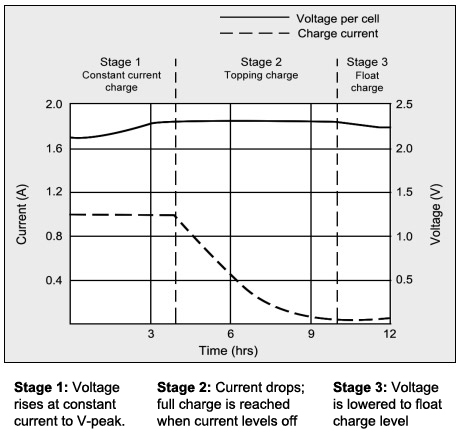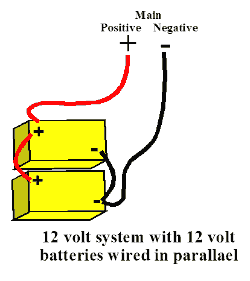normspanners
Member
- Messages
- 8,842
ODD claims ? you obviously did not read my post correctly who meansioned 45 deg ? just skipping the words because you already know the answer ?and then making odd claims to back up what you're saying - (45 or 50'C battery, 0.5v drop at battery connections etc. etc.)
if you take the time to read the battery university explanation of how a battery should be charged temperature makes a big difference.Batteries in one engine bay can be at vastly different temperatures, for instance the front battery could poss be at minus degrees whilst the rear battery could be at 40/50 degrees receiving heat off exhaust manifolds etc even those under a seat with a heater blowing on it it could reach much higher temp than the rear most one.
in Ideal conditions and perfect connection state two batteries or more can live together with the correct charging criteria, I do agree, that is not disputed, but in the real world in normal vehicle conditions they are rarely ideal and vast (in battery terms) differences in voltages are unfortunately unavoidable, due to cable length, terminal cleanliness relay contacts etc etc.
That is just it No they dont.alternator voltage gives them a good/full/equalizing charge
I have posted this before but you obviously ignored it or think you know better than the experts most old style alternators only charge to around 70/80 % of charge because the voltage actually doesnt alter enough to properly charge the battery
Lead acid cannot be fast charged and the term “fast-charge” is a misnomer. Most lead acid chargers charge the battery in 14–16 hours; anything slower is a compromise. Lead acid can be charged to 70 percent in about 8 hours; the all-important saturation charge takes up the remaining time. A partial charge is fine provided the lead acid occasionally receives a fully saturated charge to prevent sulfation.
During the constant-current charge, the battery charges to about 70 percent in 5–8 hours; the remaining 30 percent is filled with the slower topping charge that lasts another 7–10 hours. The topping charge is essential for the well-being of the battery and can be compared to a little rest after a good meal. If continually deprived, the battery will eventually lose the ability to accept a full charge and the performance will decrease due to sulfation. The float charge in the third stage maintains the battery at full charge. Figure 1 illustrates these three stages.

The switch from Stage 1 to 2 occurs seamlessly and happens when the battery reaches the set voltage limit. The current begins to drop as the battery starts to saturate; full charge is reached when the current decreases to 3–5 percent of the Ah rating. A battery with high leakage may never attain this low saturation current, and a plateau timer takes over to end the charge.
The correct setting of the charge voltage limit is critical and ranges from 2.30V to 2.45V per cell. Setting the voltage threshold is a compromise and battery experts refer to this as “dancing on the head of a needle.” On one hand, the battery wants to be fully charged to get maximum capacity and avoid sulfation on the negative plate; on the other hand, over-saturation by not switching to float charge causes grid corrosion on the positive plate. This also leads to gassing and water-loss.
Temperature changes the voltage and this makes “dancing on the head of a needle” more difficult. A warmer ambient requires a slightly lower voltage threshold and a colder temperature prefers a higher setting. Chargers exposed to temperature fluctuations include temperature sensors to adjust the charge voltage for optimum charge efficiency.
The charge temperature coefficient of a lead acid cell is –3mV/°C. Establishing 25°C (77°F) as the midpoint, the charge voltage should be reduced by 3mV per cell for every degree above 25°C and increased by 3mV per cell for every degree below 25°C. If this is not possible, it is better to choose a lower voltage for safety reasons. Table 2 compares the advantages and limitations of various peak voltage settings.


 but does seem to have practical knowledge of REAL world situations, and again is only spending his time writing information AND HIS EXPERIENCES to help people and help alone.
but does seem to have practical knowledge of REAL world situations, and again is only spending his time writing information AND HIS EXPERIENCES to help people and help alone.






